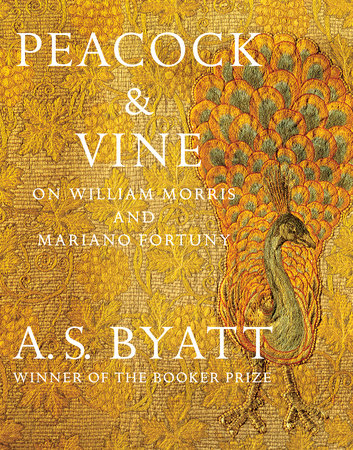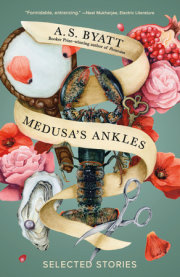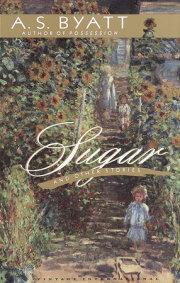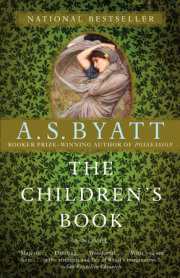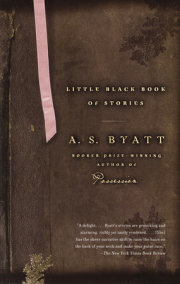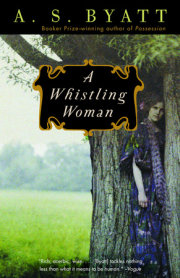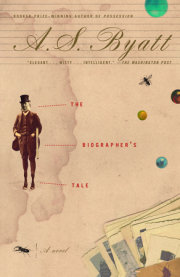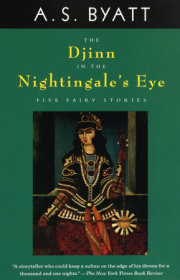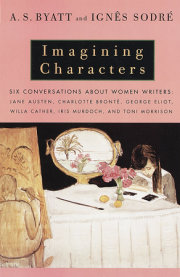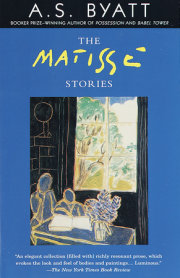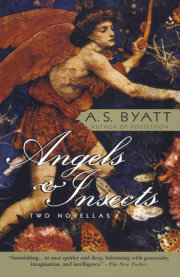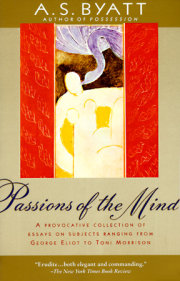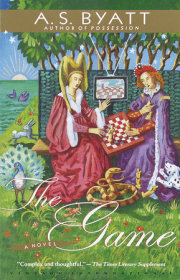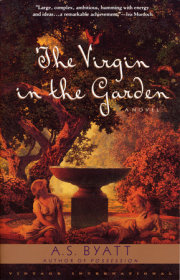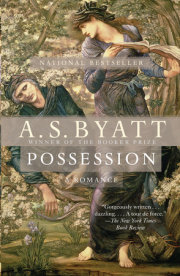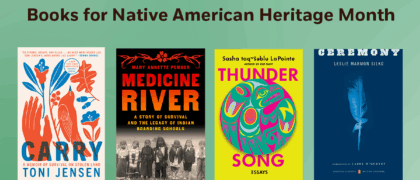We were in Venice in April and I was drunk on aquamarine light. It is an airy light, playing with the moving dark surfaces of the canals, shining on stone and marble, bringing both together in changing ways, always aquamarine. I found that an odd thing was happening to me. Every time I closed my eyes — which I increasingly did deliberately — I saw a very English green, a much more yellow green, composed of the light glittering on shaved lawns, and the dense green light in English woods, light vanishing into gnarled tree trunks, flickering on shadows on the layers of summer leaves. We were there to visit the civic museums, and I was very interested in the Palazzo Fortuny, the home of an artist of whom I had known almost nothing beyond the fact that he is the only living artist named by Proust in
A la recherche du temps perdu. I grow more and more interested in polymaths in the arts and I have always admired those whose lives and arts are indistinguishable from each other. And as I grow older I become more and more interested in craftsmen — glass-blowers, potters, makers of textiles. My own ancestors were potters in the English pottery towns — the Five Towns in Staffordshire.
As I grow older, also, I have come to understand that my writing— fiction and thinking —starts with a moment of sudden realisation that two things I have been thinking about separately are parts of the same thought, the same work. I think, fancifully perhaps, that the excitement is the excitement of the neurones in the brain, pushing out synapses connecting the web of dendrites, two movements becoming one. Every time I thought about Fortuny in the aquamarine clarity, I found I was also thinking about the Englishman William Morris. I was using Morris, whom I did know, to understand Fortuny. I was using Fortuny to reimagine Morris. Aquamarine, gold green. English meadows, Venetian canals. When I came back to England and started thinking about Morris, visiting the museums that were the houses where he had lived and worked, I closed my eyes and found my head full of aquamarine light, water flowing in canals, the dark of the Palazzo Pesaro Orfei.
They were both men of genius and extraordinary energy. They created their own surroundings, changed the visual world around them, studied the forms of the past and made them parts of new forms. In many ways they were opposites. Morris was an English bourgeois whose father had made an unexpected fortune in tin mining. He became a convinced and passionate socialist. Fortuny came from an aristocratic Spanish family of painters and artists and lived in an elegant aristocratic world. Fortuny’s imaginative roots were Mediterranean — North Africa, Crete and Delphos. Morris was obsessed by the North and the Nordic — the Icelandic sagas, Iceland itself, the North Sea.
Mariano Fortuny was born in Granada in 1871. His father, Mariano Fortuny y Marsal, was a distinguished painter, and his mother, Cecilia de Madrazo, came also from a family of artists, architects and critics. Fortuny y Marsal died of malaria when he was only thirty-six years old — his collections of pottery, armour, textiles and carpets, as well as his paintings and etchingsere an essential part of Fortuny’s life and work. After his father’s death his mother moved to Paris, where her brother Raimundo was a celebrated portrait painter: the family moved in a world of artists and writers. In 1889 the family moved to Venice — partly, at least, because Fortuny was allergic to horses, and suffered from asthma and hay fever. There they lived in the Palazzo Martinengo on the Grand Canal until Fortuny bought the Palazzo Pesaro Orfei in 1899. The move was partly because his mother did not approve of his companion, a French divorcee, Henriette Negrin, whom he met in Paris and who joined him in Venice in 1902, and whom he married in 1924.
Morris was born in 1834, of Welsh ancestry, in Walthamstow in a family with no aesthetic interests. He was sent to a preparatory school at the age of nine — he referred to it as a ‘boy farm’ — and to Marlborough College at the age of fourteen where he was desperately unhappy but stoical. He was able to do what he liked best, which was roam in the surrounding countryside. At home he developed a passion for Epping Forest, ‘certainly the biggest hornbeam wood in these islands, and I suppose in the world’. He loved the hornbeams, ‘magnificently grotesque’ as his splendid biographer, Fiona MacCarthy, puts it, and later fought to save the forest from development. He also developed a passion for churches and for the River Thames. When he went to Oxford he became part of a group of friends, including Edward Burne- Jones, who were interested in early church architecture — they were the Set and became the Brotherhood. The second volume of Ruskin’s The Stones of Venice, published in 1853 was, MacCarthy says, “an Oxford book, the Oxford book, of that whole period when the reading of Ruskin seemed to Morris to have been a “sort of revelation”’. In 1857 he met Jane Burden whom he married in 1859. Jane was the daughter of a stable hand, who had been discovered in a theatre by Dante Gabriel Rossetti and Burne-Jones, who collected what they called ‘stunners’, women of striking and unusual beauty. Morris’s marriage was not happy — Janey fell in love with Rossetti, for whom she posed, and with whom she had a long affair, about which Morris, a man capable of violent rages, was generous and tolerant. When, in 1871, Morris and Rossetti took a joint tenancy of Kelmscott Manor, Morris set off for Iceland leaving Rossetti and Jane together in Kelmscott with Morris’s two daughters, a gesture, MacCarthy says, which verged on the sublime.
Fortuny was happily married to Henriette, with whom he had lived for twenty-two years before the marriage. She was his partner in all his work.
I found I was musing on the two worlds, Venetian and English, seen through the images of the women who inhabited them. Morris himself was not essentially interested in painting — he cared for objects, for solid things. He made one painting of Jane in the summer and winter of 1857-8, a tall, slightly gawky woman in pink and white medieval costume, standing unsmiling beside a rumpled bed in which a small hound is sleeping. He is said to have written on it ‘I cannot paint you, but I love you’. In 1858, in a poem ‘Praise of My Lady’, he described her as something with the lifeless quality of ivory and metal. Her hair was ‘thick and crisped wonderfully’ dark and ‘dead’ as if forged ‘Of some strange metal, thread by thread’. Rossetti started to paint her in the 1860s, over and over again, always with the same large, red, hungry, mournful mouth, distant staring eyes, and rich melancholy mass of hair.
The Blue Silk Dress was painted in 1868 as a commission from Morris. Jane made the dress herself — Rossetti wrote to suggest that the sleeves should be ‘full at the top’ — and Jane’s daughter May remembered it as ‘a delicious, simple silk gown of shot blue and brown that was a favourite with the little girls’. In this painting Jane’s nervously twisted hands display a wedding ring. In later paintings it is not there. There is something appalling, I have discovered, in looking at a whole series of Rossetti’s images, more and more obsessive yet essentially all the same, brooding, dangerous, sexually greedy, too much. The best, and therefore the worst, is Proserpine where the brooding figure grasps the pomegranate with a bite in it, condemning her to a season in Hades. I wondered two things about this succession — are they the product of Rossetti’s own disturbed imagination, or did Jane really look like that? And what effect did these images of Rossetti’s feelings have on Morris, as they hung in his house or were bought by others?
Photographs of Jane Morris are remarkably like the paintings. Rossetti commissioned a series of photographic portraits of Jane, taken in his own garden by John Robert Parsons. The face is recognisably the face of the painted woman, unsmiling, melancholy, malcontent, beautiful. Her dresses are loose, artistic. I do not have any idea at all of what she was really like. Attempts have been made, mostly by women writers, to give her a separate identity, to make as much as possible of her skilled embroidery. But she remains alien, until in old age her hair is white and her expression resigned rather than desperate.
Henry James describes meeting her in 1868.
Imagine a tall, lean woman in a long dress of some dead purple stuff, guiltless of hoops (or of anything else I should say) with a mass of crisp black hair heaped into great wavy projections on each of her temples, a thin pale face, a pair of strange sad, deep dark Swinburnian eyes, with great thick black oblique brows É a long neck, without any collar, and in lieu thereof some dozen strings of outlandish beads — in fine complete. On the wall was a large, nearly full-length portrait of her by Rossetti, so strange and unreal that if you hadn’t seen her you’d pronounce it a distempered vision, but in fact an extremely good likeness. After dinner É Morris read us one of his unpublished poems, from the second series of his un-‘Earthly Paradise,’ and his wife, having a bad toothache, lay on the sofa, with her handkerchief to her face. There was something very quaint and remote from our actual life, it seemed to me, in the whole scene: Morris reading in his flowing antique numbers a legend of prodigies and terrors (the story of Bellerophon, it was), around us all the picturesque bric-a-brac of the apartment (every article of furniture literally a ‘specimen’ of something or other) and in the corner this dark silent medieval woman with her medieval toothache. A (to me) completely unexpected and surprising collector of Rossetti’s paintings of women was the English painter L.S. Lowry, whose own world consists of dark sticklike figures moving in urban landscapes. In an interview with Mervyn Levy he said:
I don’t like his women at all, but they fascinate me, like a snake. That’s why I always buy Rossetti whenever I can. His women are really rather horrible. It’s like a friend of mine who says he hates my work, although it fascinates him. The friend Lowry referred to was businessman Monty Bloom, to whom he also explained his obsession with Rossetti’s portraits:
They are not real women ... They are dreams ... He used them for something in his mind caused by the death of his wife. I may be quite wrong there, but significantly they all came after the death of his wife. The uneasiness aroused in me by the images of Morris’s wife is compounded by the proliferation of cartoon drawings of Morris himself by his friends, both Burne-Jones and Rossetti. Janey is swooning and elegant: Morris is squat, fat, urgent and ridiculous. There is an exemplary caricature by Burne-Jones of ‘William Morris attending his wife who lays upon a couch’. There is a drawing by Rossetti of ÔMrs Morris and the Wombat’ in which Morris is a small woolly creature (with a halo) held on a leash by proud, tormented Janey. Taken altogether these caricatures are a form of cruelty, I think, which I imagine Morris was expected to smile at and endure. He was, as I have said, known for violent rages, breaking of chairs and cutlery
— but I have seen no record of his objecting to these demeaning clever drawings. (See for instance Burne-Jones’s representations of Morris at the loom, or climbing a mountain in Iceland.)
I don’t think I should ever have clarified these thoughts and feelings if I had not simultaneously been trying to imagine Fortuny’s domestic life in the Palazzo Pesaro Orfei.
The first image most of us see of Fortuny, frequently reproduced, is of an imposing bearded face, under a turban, over a flowing gown — a magician from the Arabian Nights. He lived in a world of elegant parties, extravagant theatricals, carnival and opulence. His domestic history, and his many images of his wife, are not quite what we expect. The relationship appears to have deepened slowly — they met from time to time in Paris until they decided that Henriette would join Fortuny in 1902. They arrived in Venice on the day on which the campanile of San Marco collapsed, which Fortuny’s mother took as a bad omen. They lived together in the Palazzo Pesaro Orfei which Fortuny reconstructed for their workshop, studio and living space. In 1906 Arthur Evans discovered ancient fabrics during excavations in Crete — I shall come back to these — and Fortuny and Henriette decided together to make new fabrics in these old forms. She was his partner and collaborator both in the revolutionary pleated fabrics, and in the dyeing, stencilling and printing of new silk, velvet and cotton fabrics. We are told that they lived austerely and simply in their palace-workshop, with Henriette making the beds, and washing up after meals. During all their time together Fortuny made images of Henriette, paintings, photographs, drawings — there is a wonderful charcoal drawing of a young Henriette, with a mass of dark hair, now in the Biblioteca Nacional in Madrid. She is a beautiful woman certainly, with an elegant face and hands. In the paintings particularly she has a questioning, thoughtful look, at once holding back and open. She is not voluptuous — she is what the French would describe as
bien dans sa peau. What is striking about these repeated images — whether they were painted in 1915 or 1930 — is the feeling the painter seems to have for the model. He isn’t particularly painting desire — he is painting both love and liking — this is a face he knows intimately, and cares about. There is a lovely photograph by Fortuny of Henriette in a working overall in the Palazzo Pesaro Orfei, bent over an engraved wooden block she is colouring for printing silk or velvet. And in the Museo Fortuny today there is a group of paintings hanging on a wall in the salon, a family collection, of portraits of Henriette and a self-portrait of Fortuny. Morris’s domesticity was tormented, however generously he tried to accommodate his wife’s needs and nerves. Fortuny seems to have created domestic calm and happiness in a glittering cavern.
Copyright © 2016 by A. S. Byatt. All rights reserved. No part of this excerpt may be reproduced or reprinted without permission in writing from the publisher.

